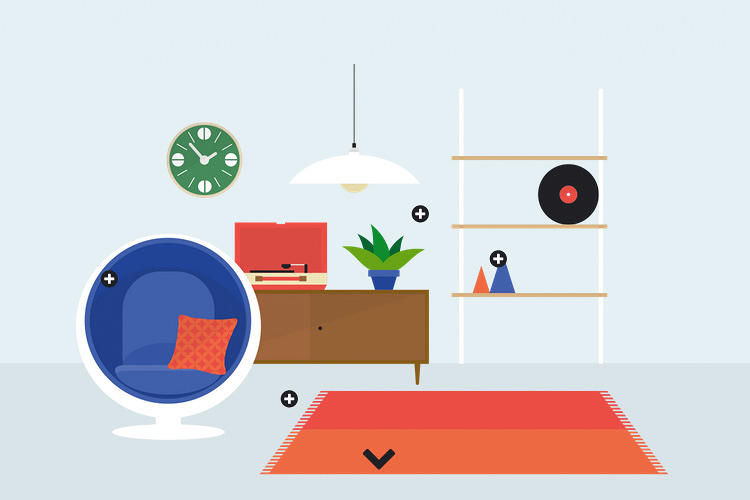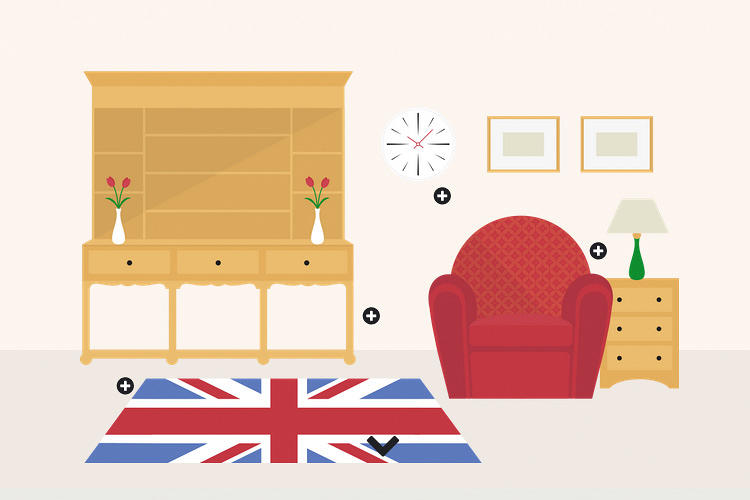An Illustrated History Of Interior Design
From shag carpeting to shabby chick to IKEA, this interactive infographic visualises a history of interior design.

1950s interior design was characterized by modernism and influenced by the Danish design movement, with crisp, sweeping lines and vivid coloring.

During the free love movement of the 1960s, interior designers reacted to the wholesome, traditional family values of the ‘50s with post-modernist riffs on elements of the past (Victorian and Georgian-inspired furniture) and the imagined future (groovy lava lamps).

The 1970s saw the birth of DIY culture, Space Age-influenced styles (like that pod chair), and the hippie movement’s preference for rustic, “natural” furniture of teak and pine.

The 1980s saw the birth of “shabby chic” and the avant garde Memphis Group in Milan, with furniture in bold geometric shapes and colors. The decade of excess also brought plenty of chintzy, ostentatious interiors.

1990s interior design reigned in the excess of the '80s, opting for more minimalism and lots and lots of pine furniture.

The 2000s saw the Ikea flatpack furniture takeover and a bigger integration of tech into interior design, with flatscreen TVs channeling home cinema.

In the 2010s, self-expression has come to define the approach to interior design. So has economizing–the recession has led to smaller furniture with built-in storage.
Inspired by FastCoDesign; Images from Harvey Water Softeners
